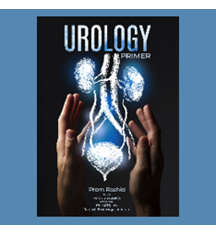2023 | Volume 24 | Issue 2
If it looks like sepsis, it probably is

Author: Professor Guy Maddern Chair, ANZASM
Specialty: Orthopaedic Surgery
Case summary
A man in his early 80s presenting with a painful, warm left knee was admitted through the emergency department of a major tertiary hospital by the on-call orthopaedic registrar.
The patient was unable to bear weight and was acutely limited in range of motion to 15 to 30 degrees. He denied any fall or mechanical trauma to the knee. However, the left knee was a prosthetic knee from 10 years ago. This should have initially raised a high clinical suspicion for infective arthritis of the knee. Instead, clinical management was directed towards obtaining a computerised tomography (CT) scan to exclude occult fracture. The patient’s C-reactive protein (CRP) marker was 25mg/L on presentation, which may have contributed to this decision.
The patient had significant multisystem comorbidities, including atrial fibrillation on anticoagulation, ischaemic heart disease, chronic obstructive pulmonary disease, liver impairment, ankylosing spondylitis, and previous infective endocarditis.
In the days following the admission, the patient reported worsening knee pain (rated 10 on a pain scale 0 to 10 on day two). On day three he was found to be delirious, requiring a medical emergency team (MET) call. The medical intervention suggested further investigations with a CT scan of the brain. An infective workup or source identification was not started at this point. The patient was evaluated by the orthogeriatric service for the first time on that same day. There seems to have been a miscommunication at this level, as the primary presenting complaint recorded by this service was ‘knee injury’, while from the primary admission note it was quite clear that the knee was not really injured.
By day five, the patient’s inflammatory markers had increased significantly (CRP 228mg/L); however, this did not trigger any action towards source identification or control.
On day seven, a septic screen was ordered, which returned a positive blood culture with Staphylococcus aureus bacteraemia. By this point the patient was showing a significant inflammatory response, with a febrile episode, CRP of 320mg/L, leucocytosis to 14.8 x109/L and platelet depletion. A further MET call occurred, and the patient was started on antibiotic therapy.
On day eight, the patient was evaluated by the admitting orthopaedic consultant for the first time since admission. By this time the patient had a CRP of 372mg/L, white blood cell count of 29 x109/L, and another positive blood culture with Staphylococcus aureus bacteraemia. The clinical note only reports ‘not consistent with septic arthritis’. No appropriately detailed clinical examination to support this assessment was noted. There was no documentation of any consideration of a diagnostic aspiration to investigate the left prosthetic knee as a potential infective source.
After a further MET call on day eight, the patient was referred to the palliative unit and the family notified. The patient passed away five days later.
Discussion
An elderly patient with a prosthetic knee that had been functioning well for nearly 10 years presenting with sudden pain, inability to bear weight, severely reduced range of motion, joint warmth and fluid in the joint, combined with a cascading development of delirium, leucocytosis and rising CRP should have triggered suspicion for septic arthritis. A more objective route to establish or exclude the prosthetic knee as the focus of sepsis should have been taken, including joint aspiration.
It is also noteworthy that the admission occurred near the time of hospital registrar changeover. The orthopaedic registrar and resident medical officer that primarily admitted this patient with non-traumatic left prosthetic knee pain did not see him again at any point after the admission, likely because they were rotated away and a new team took over. This is when the clinical focus of the patient was misunderstood by the new team as ‘knee joint haematoma’ or ‘knee injury’, which seems to have distracted the team from investigating the patient for septic arthritis of the prosthetic knee. Here lies a concern with continuity of care, and the quality and efficiency of handover with the change of medical teams.
Decision-making and early investigation of the septic arthritis may have been improved by earlier and more diligent involvement by the orthopaedic consultant. Closer involvement of the medical orthogeriatric team also would have likely improved the clinical care and trajectory of this patient. Case note assessment revealed that, at this site, the orthogeriatric unit is only a consulting service not a co-admission team that could have provided more regular and in-depth assessment and guidance for management of this patient. It would also have been diligent to seek specialist infectious diseases consultation for identifying the focus of sepsis for this elderly patient with septicaemia of undiagnosed focus, a prosthetic joint and a history of infective endocarditis.
Clinical lessons
This case provides multiple clinical and administrative points to consider, learn from and improve upon. Poor clinical handover has been associated with diagnostic errors, treatment errors and treatment delays, as demonstrated in this case. The erroneous clinical documentation suggesting a knee injury preceding the clinical presentation led to a significant delay in the diagnosis of sepsis, which most likely contributed to the patient’s death. It is the responsibility of the admitting team to ensure clinical documentation is accurate; if a junior doctor is recording documentation, it should be checked by the admitting registrar for accuracy.
The diagnosis of sepsis appears to have eluded several teams, including orthogeriatric and the MET response, when in hindsight it appears obvious. This highlights the importance of timely referral to other specialist teams—infectious diseases in this case—when clinical deterioration occurs.
ANZASM second line assessments frequently identify a lack of timely consultant involvement in management of patients. It seems reasonable that all patients should have a consultant ‘bedside review’ within at least 14 hours of admission and prompt follow-up review when indicated. Junior staff need support and supervision of their decisions and management plans. This is the role of consultant surgeons and appears to be missing from many cases reviewed in the mortality audit.
Clear protocols and practice need to be defined and followed if this situation is to be addressed.

